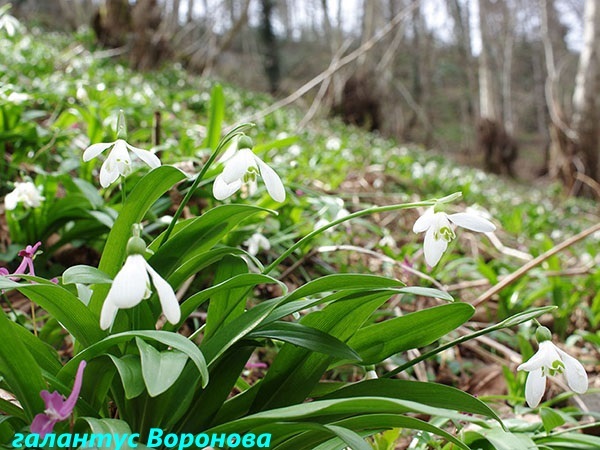Contentslong red petioles and green burdock-shaped leaves can be found in many private plots. This is rumbambar or rhubarb, the benefits and harms of which will be discussed in this article.
The plant is a herbaceous perennial, which is home to South-East Asia. It reached Europe only in the 16th century, but very quickly found its use. Now rhubarb is cultivated on all continents, but most actively in countries such as the United Kingdom, the United States.
What is the value of the product
Rhubarb stalks have a high nutritional value. They contain fiber( 3.2%), carbohydrates( 2.5%) and proteins( 0.7%).At the same time, the caloric content of the product is low - 20 kcal / 100 g.
 The plant is rich in:
The plant is rich in:
- with vitamins( C, A, E, group B, PP);
- organic acids( citric, oxalic, chrysophane, succinic, malic);
- mineral salts;
- pectin metabolism stabilizing substances;
- polyphenols capable of slowing the growth of cancer cells.
With this beneficial composition, rumbambar becomes a competitor to such highly vitamins as apples and sauerkraut.
Applications
 At first, the plant was used primarily in cooking. Jam, kissels, stuffing for pies were made from its stems, compotes were cooked, added to salads and side dishes. American and European chefs are still preparing various desserts, sauces, and dietary delicacies on the basis of this culture.
At first, the plant was used primarily in cooking. Jam, kissels, stuffing for pies were made from its stems, compotes were cooked, added to salads and side dishes. American and European chefs are still preparing various desserts, sauces, and dietary delicacies on the basis of this culture.
Later, the useful properties of rhubarb, noticed by ancient Tibetan monks, were confirmed by modern scholars. The culture began to be used in:
- pharmaceuticals( for the manufacture of tablets, powders, mixtures, to obtain an extract);
- homeopathy( raw, dried form for the preparation of therapeutic decoctions).
Rhubarb is a unique plant, all parts of which are useful. The grass root has a healing effect, the stalks are consumed by humans, and the leaves are fed to animals.
Features of the use of plants for medicinal purposes
Stems and rhubarb root, many scientists have studied medicinal properties and contraindications, have an extensive effect on the human body.
Normalization of the gastrointestinal tract
Rumbambar increases the secretion of gastric juice, which stimulates the appetite, improves the process of digesting food. Poor decoction of this plant helps with diarrhea, and concentrated - with constipation.
The tool acts slowly( about 7-8 hours), but the bowel movement takes place naturally and gently.
Strengthening Immunity
Raw rhubarb petioles are a source of beneficial substances, so they should be eaten with avitaminosis, decreased immunity after a cold or viral disease.
Plant stems are an effective regenerating and fortifying agent that can replace many pharmaceutical preparations.
They should be taken in food for the prevention of colds, flu, to increase the body's resistance to viruses, to increase its tone.
Adjusting the work of the heart and blood vessels
 Pectin contained in cuttings of rhubarb, reduces cholesterol levels, which prevents vascular clogging. Bioactive substances strengthen the heart muscle, reducing the likelihood of a heart attack, ischemic heart disease.
Pectin contained in cuttings of rhubarb, reduces cholesterol levels, which prevents vascular clogging. Bioactive substances strengthen the heart muscle, reducing the likelihood of a heart attack, ischemic heart disease.
Rumbambara root has urinary and choleretic properties. A decoction of it is recommended to take people who are prone to puffiness. Helps rhubarb root of hepatitis, facilitating the patient's condition, reducing the number of relapses.
The use of rhubarb in the treatment of psoriasis, gout, arthritis, inflammatory diseases of the respiratory organs, and tuberculosis has been noted. This dietary product, rich in vitamins but low in calories, is recommended for those who watch their weight.
Cosmetic properties of rumbambara
 Due to its high content of vitamin C( 10 mg), the plant is a natural antioxidant. It accelerates the regeneration processes in the cells, stimulating the rapid renewal of the skin, increasing its elasticity.
Due to its high content of vitamin C( 10 mg), the plant is a natural antioxidant. It accelerates the regeneration processes in the cells, stimulating the rapid renewal of the skin, increasing its elasticity.
Useful rhubarb and hair. It allows you to restore the structure of the hair, give it a golden or bronze tint. To do this, make a decoction of the root of the plant, to which other components are added( soda, white wine).
Cautions for consuming the product
The benefits and harms of rhubarb are equivalent if the plant is used incorrectly. Prolonged use of rumbambara in large doses causes the body to become addictive, weakening the effects of the agent.
 Do not eat a plant with:
Do not eat a plant with:
- rheumatism, diabetes, cholecystitis;
- presence of ulcers, bleeding, peritonitis;
- kidney stones. The oxalic acid contained in the product forms insoluble compounds with calcium.
Eating raw rhubarb should be limited to pregnant, lactating mothers, and excluded from the diet of children under 2 years of age.
Rhubarb, the benefits and harms of which were discussed in the article - a unique product that has been undeservedly forgotten by humanity. If you use it correctly, it will not only diversify your diet, but will also replace most vegetables, fruits, pharmaceutical vitamins.


